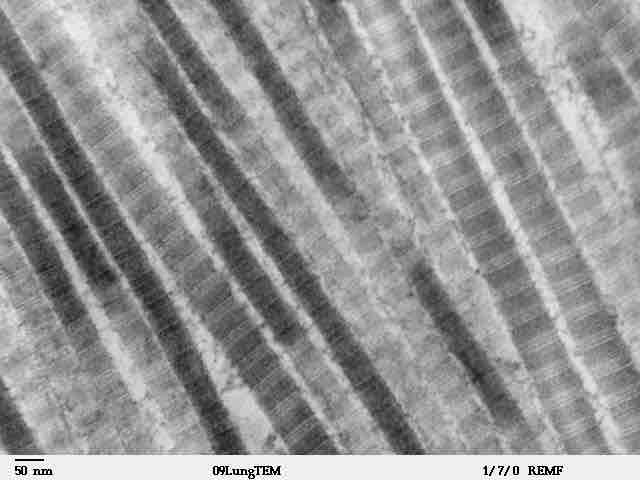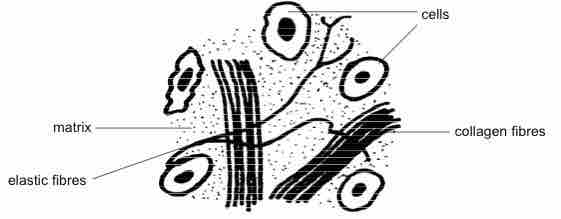Connective tissue (CT) is a one of the four main classes of tissues. Although it is the most abundant and widely distributed of the primary tissues, the amount of connective tissue in a particular organ varies. Like to the timber framing of a house, the connective tissue provides structure and support throughout the body.
Structure of Connective Tissue
Connective tissue has three main components:
- Ground substance.
- Fibers.
- Cells.
Together the ground substance and fibers make up the extracellular matrix. The composition of these three elements vary tremendously from one organ to the other. This offers great diversity in the types of connective tissue.
Ground substance is a clear, colorless, viscous fluid that fills the space between the cells and fibers. It is composed of proteoglycans and cell adhesion proteins that allow the connective tissue to act as glue for the cells to attach to the matrix. The ground substance functions as a molecular sieve for substances to travel between blood capillaries and cells.
Connective tissue fibers provide support. Three types of fibers are found in connective tissue:
Collagen Fibers
Collagen fibers are fibrous proteins and are secreted into the extracellular space and they provide high tensile strength to the matrix.
Elastic Fibers
Elastic fibers are long, thin fibers that form branching network in the extracellular matrix. They help the connective tissue to stretch and recoil.
Reticular Fibers
Reticular fibers are short, fine collagenous fibers that can branch extensively to form a delicate network.

Collagen
Collagen fibers are the strongest and most abundant of all the connective tissue fibers.

Structural elements of connective tissue
Connective tissues consist of three parts: cells suspended in a ground substance or matrix; and most have fibers running through it.
Function of Connective Tissue
The major functions of connective tissue include:
- Binding and supporting.
- Protecting.
- Insulating.
- Storing reserve fuel.
- Transporting substances within the body.